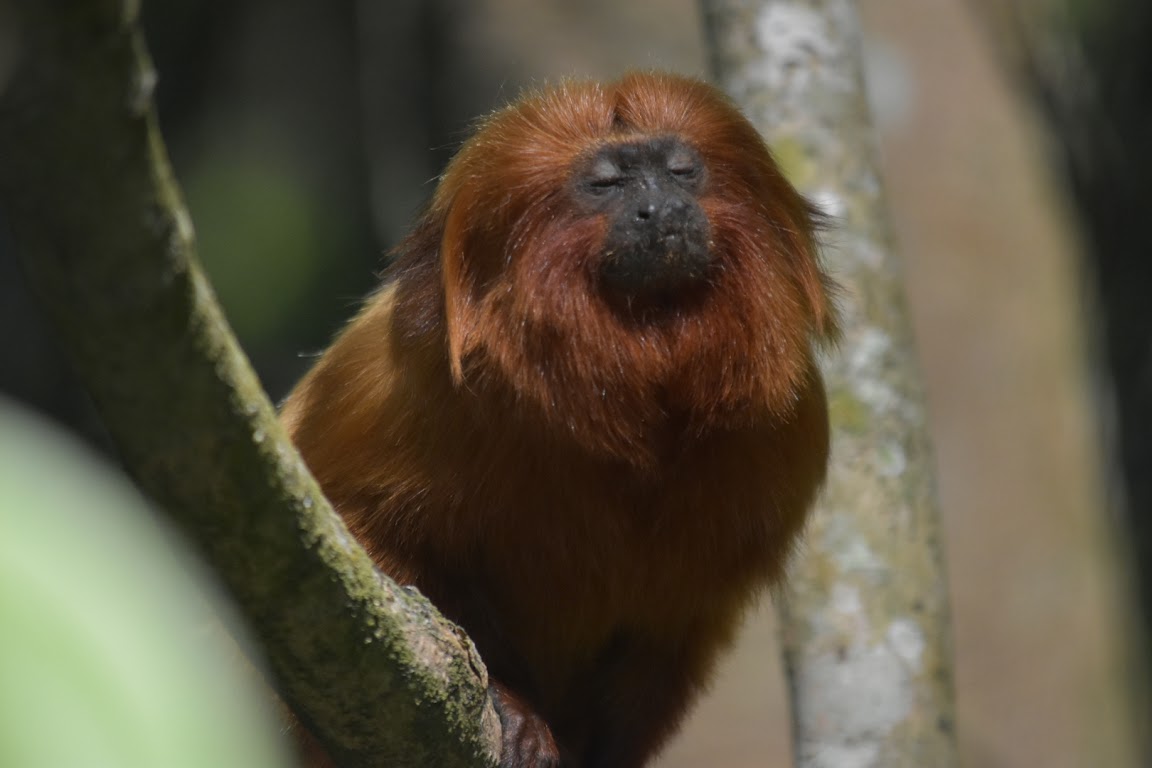Spotting rainforest animals in Rio de Janeiro’s Botanical Gardens
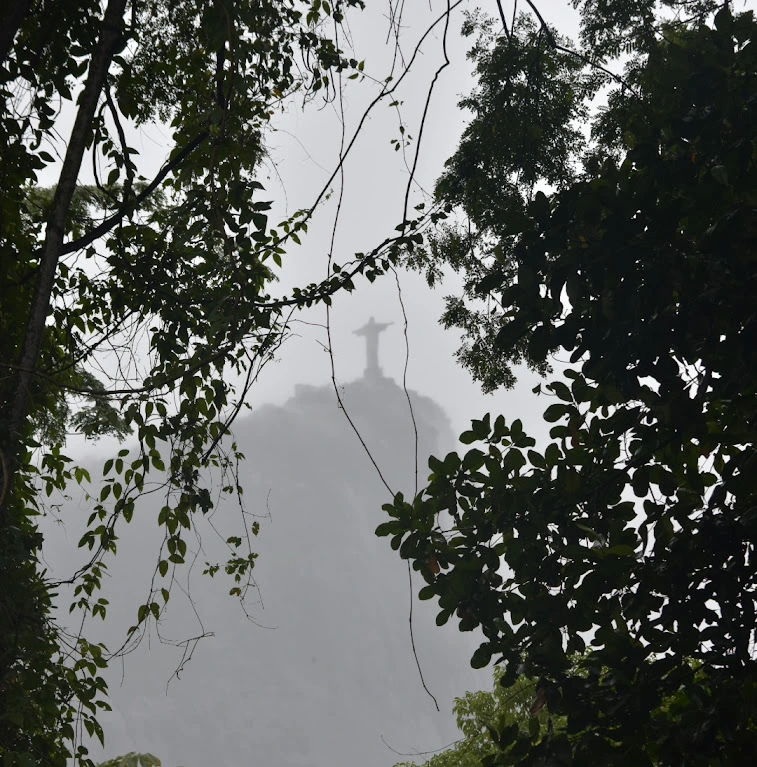
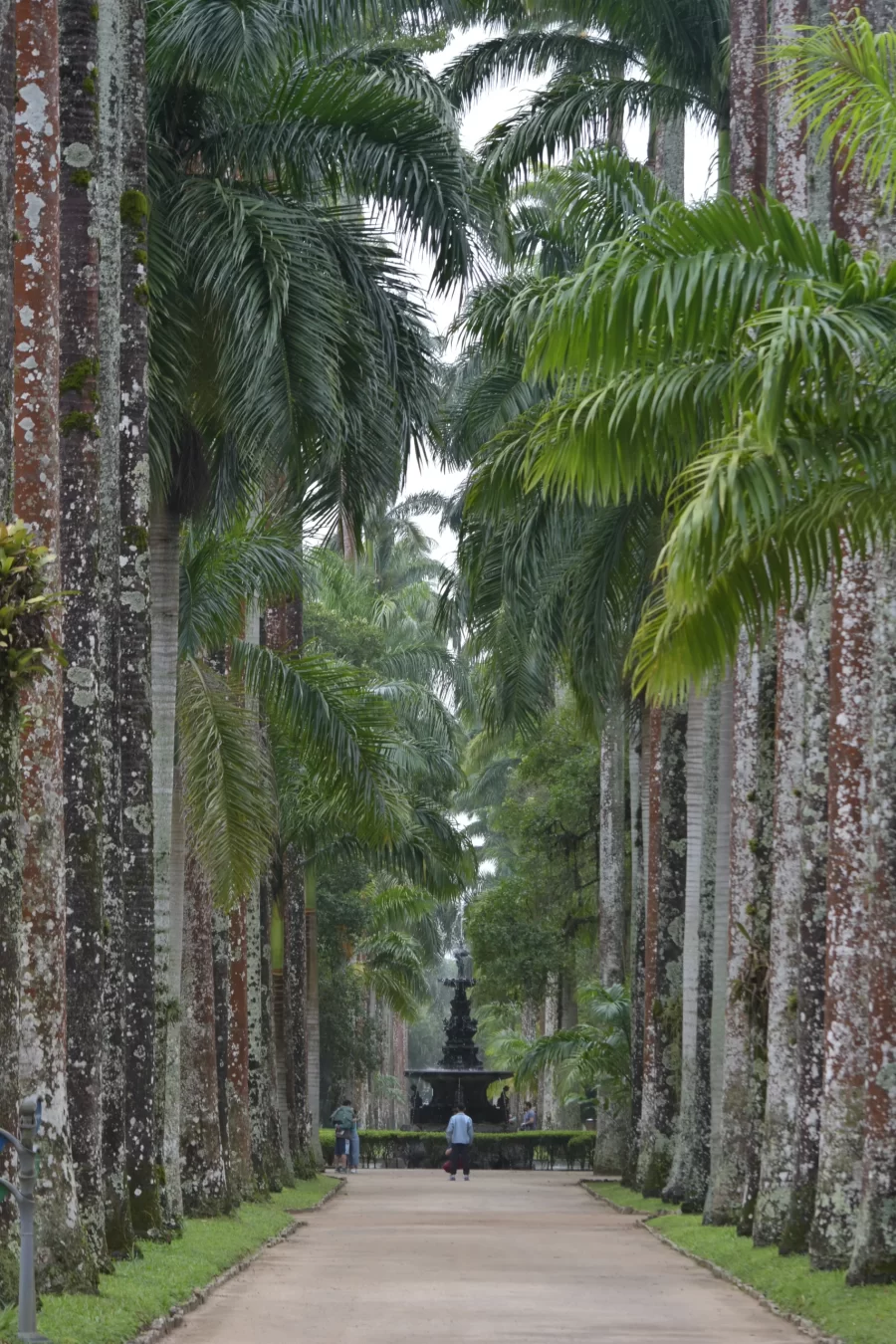
I visited Brazil for a variety of reasons, but top of the list was its stunning nature. Given that I’d be landing in Rio de Janeiro, the botanical gardens made for the perfect place to get started in that regard. Rio de Janeiro is situated in the halfway point of the Atlantic Forest, a stretch of rainforest straddling Brazil’s coast from Salvador southwards to Sao Paulo, before shooting inland towards Iguazu Falls. Anyone heading transiting through Rio on their way to the Pantanal or Amazon would do well to pay the botanical gardens a visit: not only do they boast a small collection of exotic birds and monkeys, but the ones you’ll find are completely used to people. As a result, getting up-close shots will be easy-breezy, especially if you’ve got a zoom lens.
Part of the reason for this abundance of life is that the gardens also border on the world’s largest urban forest – Tijuca National Park. Clustered around Christ the Redeemer, this park was the result of an extensive reforestation program that began in the late 19th Century. Dom Joao II, the last emperor of Brazil and considered by many to have been the best leader Brazil ever had, ordered its restoration in order to protect Rio de Janeiro’s drinking water supply. Years of reclaiming and reforesting land from coffee plantations followed, together with reintroducing some of the animals that had been driven to local extinction. Quite a heartwarming story in a country that more often makes the headlines for deforestation.
Exploring the gardens
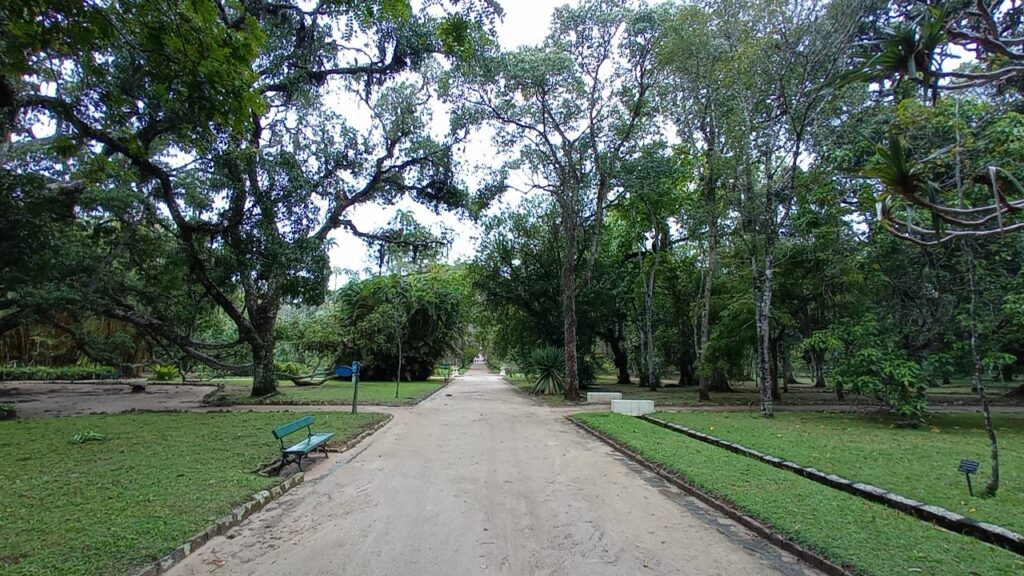
It’s a grey day in Rio, and surprisingly chilly – I’m in my jeans and jumper without breaking a sweat. I make my way through the gates and the colonial-style buildings that form the visitor centre and entrance. The lady at the ticket office asks me where I’m from, and Sao Paulo is her first guess. Err, no, I answer, I’m from Scotland. Looking back on it I probably should have played along with her Sao Paulo game, for I would have avoided the foreigner entry fee – like many countries, Brazil charges foreign tourists more for entrance to sites. C’est la vie.
The botanical gardens are laid out in an almost grid-like pattern, with trees and vines dotted all over. Some parts of the gardens have been manicured, such as the avenue of fifty-metre palm trees that this park is famous for. Others are much more natural, and there’s even a path that skirts the edges of Tijuca National Park. The first thing I notice as I enter is the screech of parrots: it’s my first day in Rio, and their cries are my reminder that, despite the Scottish weather that followed me here, I’m in the tropics. A cacophony of other bird calls sounds out every step of the way – perhaps the cool weather has made them more active.
Colourful birds and Christ the Redeemer
I go up to an ivy-covered gazebo on a small hill, overlooking a lake and a fruit tree: the latter has a backdrop of the misty hills of Tijuca, meaning that birds that do land on these branches will not come out as mere silhouettes when I photograph them. Sure enough, tanagers (brightly coloured birds) that look like they came straight out of a colouring book land in front of me, while a miniscule hummingbird flits about the flowers further up. I don’t manage to get a shot of it, but in any case these things are hard to photograph – they can change position like flies and move just as fast. Only when I find one landed a while later do I get a half-decent shot.
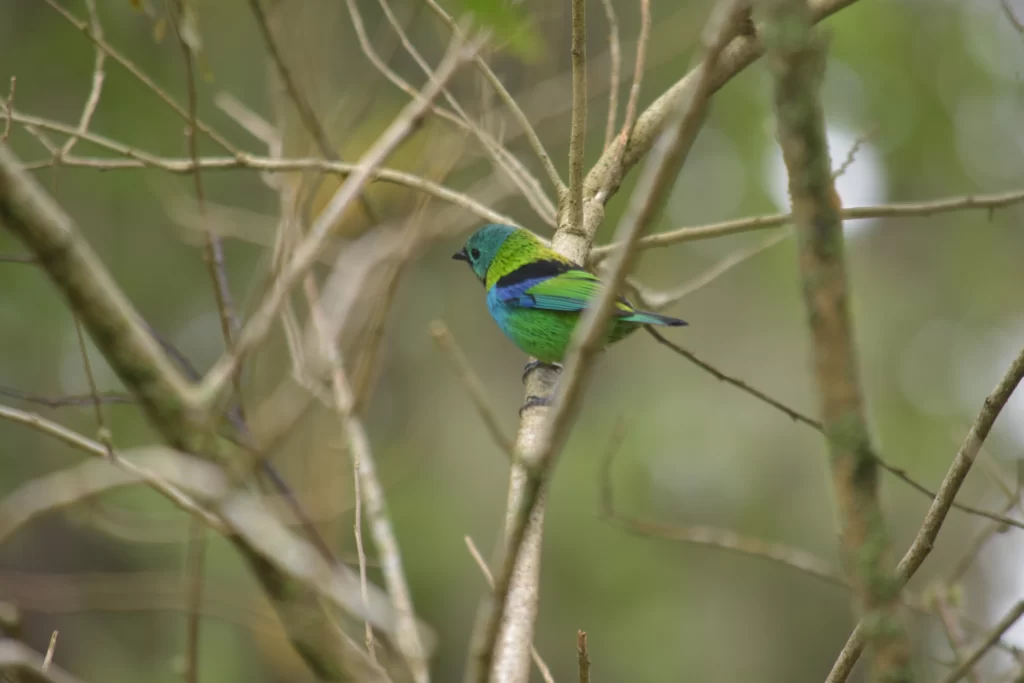
Near this gazebo is also where I get the first view of Rio’s calling card landmark, Christ the Redeemer. It’s a rather holy moment: on this misty day, the cloud is slowly falling down the mountain, wisps in its wake, giving Jesus and his outstretched arms the appearance of ascending to heaven. I’m not a religious man, but I can only count myself privileged to be in the right spot at the right moment as Rio’s weather puts on a show with its landmark statue.
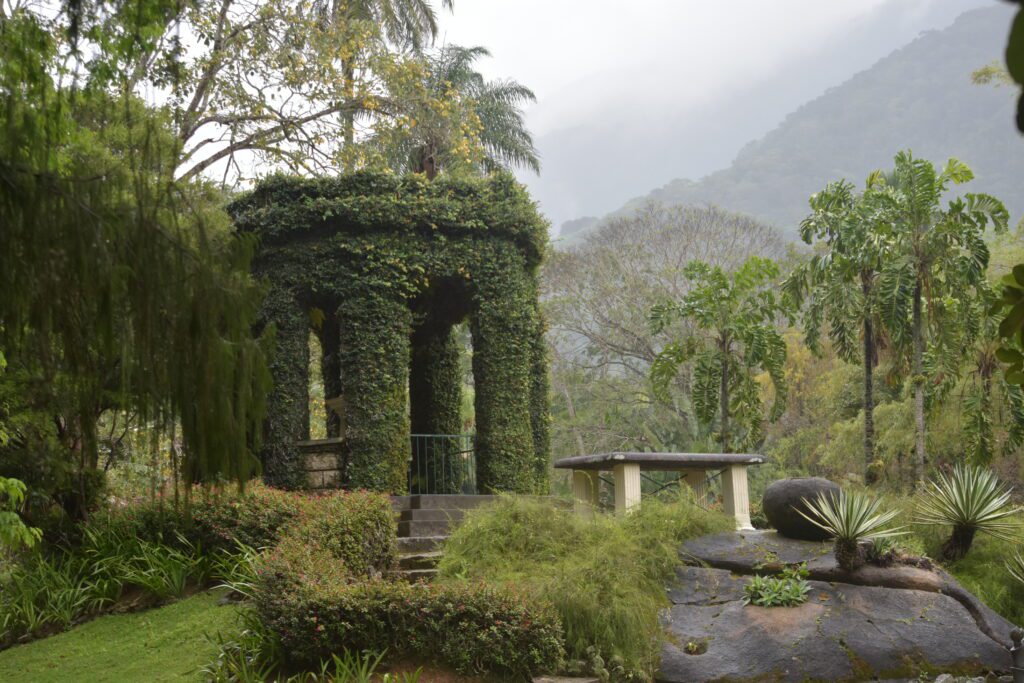
It’s near the famous avenue of the palms that I find my group of toucans – at first, they’re high up and difficult to snap, but then they move to some smaller fruit trees. Oh yes. Here I’m able to get point-blank shots of them as they stare back at the camera. Toucans are delightfully comical birds: when staring back at the camera, they don’t just look – they stare out one side while slowly turning their beak. I’m sure there’s some zoological reason for this, but it definitely makes one feel like they’re sizing you up.

As I pass through the park, a security guard notices my zoom lens. He says something, and my Portuguese is good enough to understand “macaco”, monkey. He then points me in a certain direction, which I heed. Sure enough, there’s a group of capuchins milling about near a stream. Most are busy getting themselves fed, but the youngsters have other ideas. As the (presumably) siblings slap each other and roll around play-fighting, I can find no finer evidence that humans are descended from these animals.
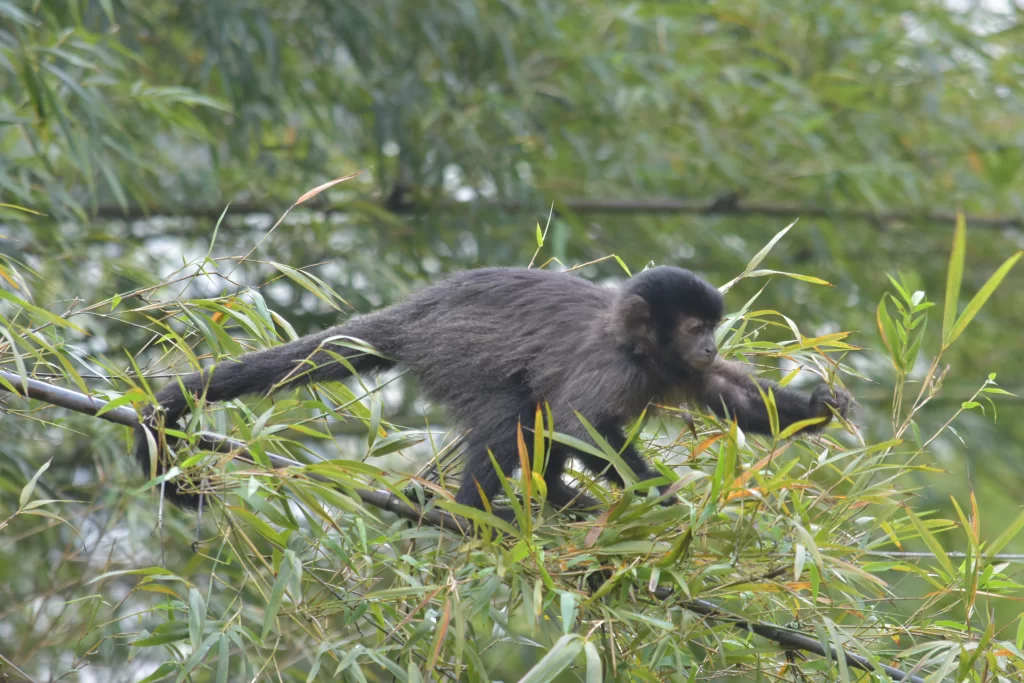
It begins to rain at one point. I retreat to a cafe where I have my first experience of communicating in Portuguese with the waiter. He chuckles as I tell him it’s more Portunhol right now, a mix of Portuguese and Spanish words that will happen when you’ve learned the two side by side. Not to worry, he tells me: “Seu Portugues e muito bem” (your Portuguese is very good). And with those words said, my day is positively made. I tuck into my first Pao de Quiejo, a bread ball filled with cheese, and a rich Brazilian cappuccino, as I watch the rain pour around me. A lot of stress happened before I set off on this trip, but cathartic moments like this make it all worth it.
What kind of animals can be seen in the Jardim Botanico (TLDR)
Toucans frequent the fruit trees around the palm tree avenue. If they’re in one of the taller ones, it might be worth coming back later to see if they’ve moved on to any of the smaller ones closer to the centre since this will make them much easier to photograph.
Smaller birds such as tanagers and hummingbirds might require a bit more effort to find, but one good place to look is the fruit tree by the ivy-covered gazebo (and while you’re at it, you’ll get an excellent view of Christ the Redeemer).
There are two species of monkeys in the gardens, capuchins and marmosets. Marmosets can be found bouncing around in the trees if it’s not raining (which might explain why I didn’t see any when I went). With capuchins, it’s very much luck of the draw whether or not they’ll be there since they only drop by on the odd occasion from their home in Tijuca.
Are Rio’s Botanical Gardens safe?
Yes. The park is well-guarded and fenced off, and in any case, the surrounding area is an upscale neighbourhood. In fact, I felt so safe here I had no hesitation in having my zoom lens camera, phone and action camera on display (sometimes all three at once), which definitely would not be advisable in the rest of Rio. Of course, one should never throw caution to the wind, but this is one part of Rio where one can relax a little bit.
How to get there
Uber is the only method I can really recommend, especially if you’re going to be bringing a Zoom lens or binoculars along. From Ipanema, Leblon and Copacabana, where most of the accommodation is, it shouldn’t cost more than 15 Reais.
Enjoyed this post? Nice one! (+ How to thank me)
If there’s anything I’ve missed please feel free to contact me or let me know in the comments below. Likewise if you’d like to thank me, and if you want to do so in another way then please consider making some of your trip’s bookings through the following links. By doing so I’ll earn a small commission, and it won’t cost you a penny more!
Hostelworld – has a wide array of options in Rio, from trendy hostels to old guesthouses.
Busbud.com – This site makes booking bus tickets in Brazil nice and easy since it’s all in English, plus they don’t require a CPF (Brazilian identity number) to make a booking.




